Cine lenses are expensive due to their optical quality (sharpness, color rendition, low distortion), precision engineering, and durable construction. Additionally, their ability to maintain focus (parfocal) and aperture consistency across various focal lengths adds to the high cost.
You can get budget-friendly cinema lenses. One option is re-housed vintage photography lenses, while others are true cine lenses built from the bottom up. To learn more about the latter, see our guide Best Affordable Cine Lenses (Budget, Mid-Range, and Professional).
Key Takeaways
- Cine lenses are built with precision, reliability, and durability in mind.
- The exact light measurement through T-stops provides consistent exposure across a set of lenses, essential for consistent results.
- Cine lenses are built for manual control, exact framing and focusing, and large, smooth focus rings for focus pulling.
- The parfocal design in cine lenses ensures constant focus during zooming but also adds to the cost.
If you’re new to lens design, keep reading.
Table of Contents
The main Differences Between Cinema Lenses and Photo Lenses
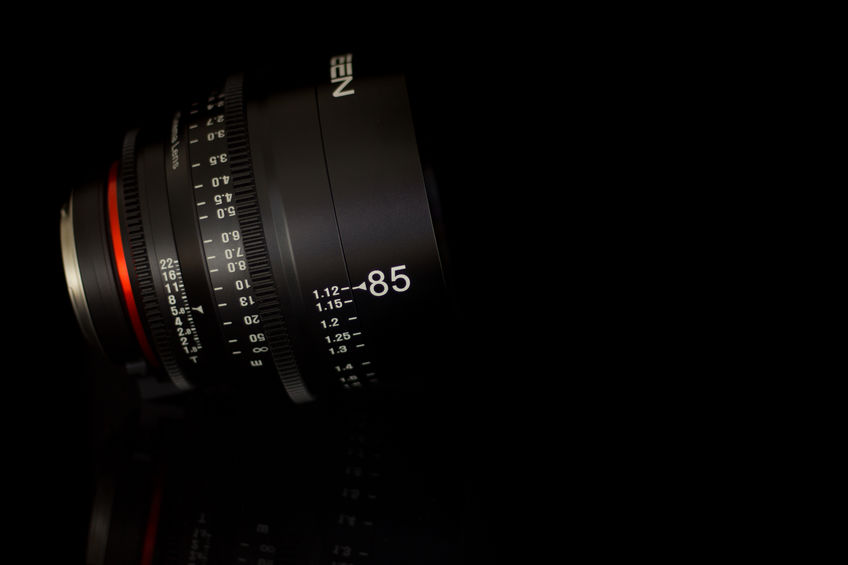
A photography camera captures still images. You focus on the subject and take the picture. A motion picture camera records moving images, which requires greater control over the lens’s focus and aperture. You cannot stop between each frame to adjust the focus, aperture, zoom, and other settings.
Cine lenses have more moving parts than a photography lens, a step-less aperture, hard focus stops, and precise focus measurements. Some top movie camera lenses, such as those from ARRI, also include handmade components, dramatically increasing costs.
Because a cinema lens is designed to be tweaked while continuously recording images, it is built differently. Some of the most significant differences between modern cine lenses and photo lenses include:
| Cine lens | Photo lens |
|---|---|
| Metal housing | Plastic housing (with a few exceptions) |
| Accurate light measurement (T-stop) | Formula based light measurement (f-stop) |
| Accurate distance measuring markings | Approximate distance markings |
| A smooth and large focus ring with gears | Smooth smaller focus ring without gears |
| Mechanical focus ring | Focus by wire (sometimes) |
| Studier mount options (PL-mount) | No PL-mount – otherwise, the same options available. |
| Smooth step-less aperture selection | No aperture ring on the lens (f-stop set in-camera). On some lenses: stepped aperture ring |
| No autofocus available (except for a few servo options) | Autofocus available on some lenses |
| No optical image stabilization available | Optical Image Stabilization available on some lenses |
| Cine zoom lenses are often parfocal | Zoom lenses not parfocal |
| Minimal focus breathing | Focus breathing often more pronounced |
While some are self-explanatory, others might need an explanation…
Cine lens housing, mount, and build-quality
The housing of photography lenses is often made of plastic components, while cine lenses feature metal construction.
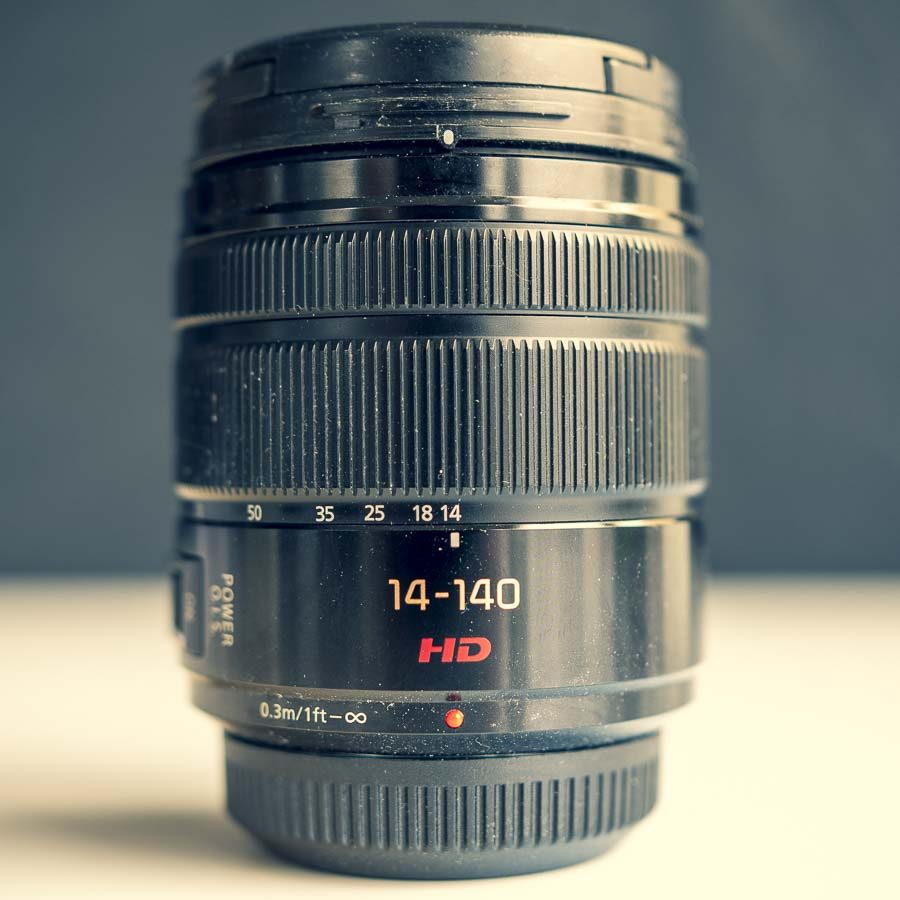
The body of a cine lens, the mount, and internal parts are often made from stainless steel and other hard metals.
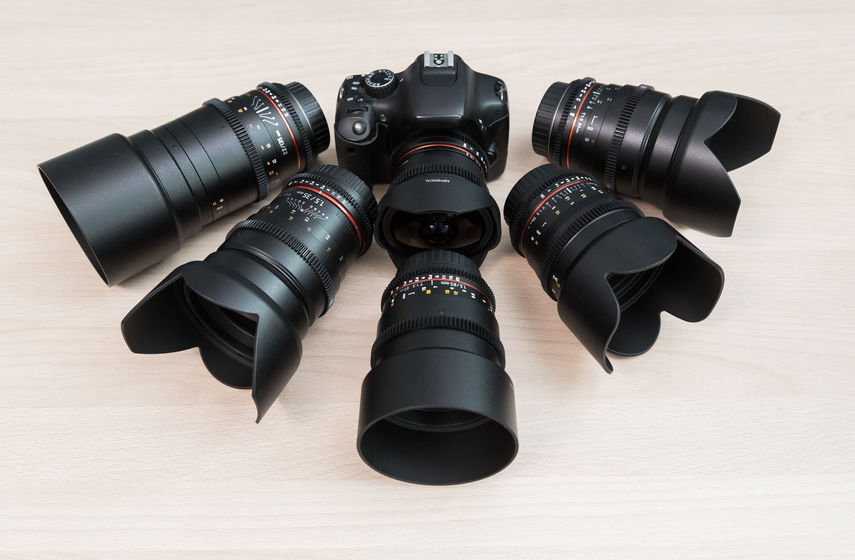
The metal construction increases the lens’s durability and reliability and is more likely to provide consistent performance.
What Is the Difference Between a T-Stop and an F-Stop?
An f-stop on a photography lens is a formula-based calculation of the light a lens lets through. However, every still lens has a unique design that subtly varies in the amount of light that reaches the camera sensor.
A T-stop on a cine lens is an exact measurement of the light a lens lets through. T-stops make it easier to match different lenses regarding exposure, as you know exactly how much light you’re getting.
If this sounds complicated, don’t worry. Here’s a more thorough explanation:
F-stops on photography lenses explained
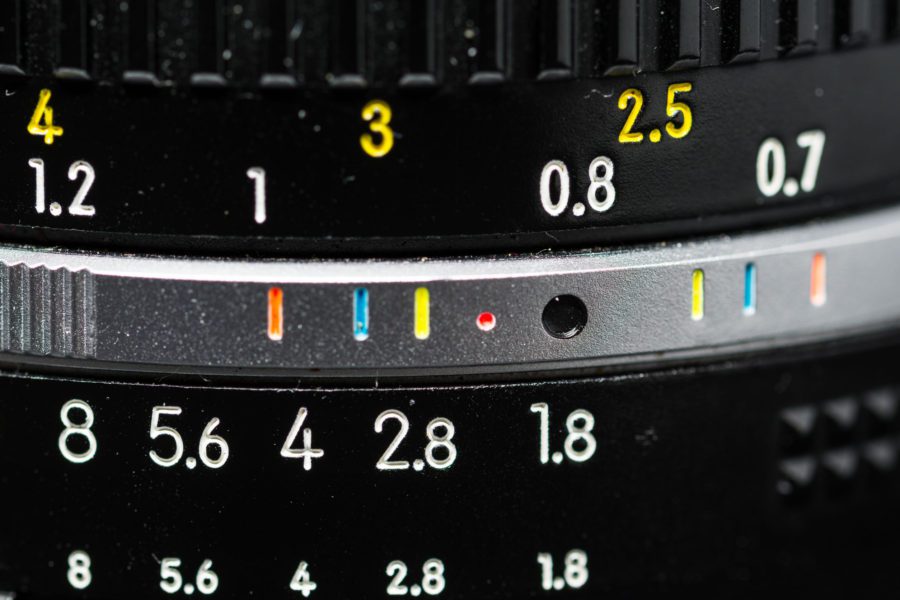
With photo lenses, the size of the iris opening is specified using a scale of f-stops (fx f/1.4, f/2.8 … f/22).
Fx, an f-stop of f/1.4, lets twice the amount of light (due to the larger opening of the aperture) than an f-stop of f/2.0.
The f-stop is calculated as such…
| The f-stop formula |
|---|
| f-stop = lens focal lens / effective aperture circle diameter |
This means that when you increase the lens’s aperture, the f-stop number becomes lower. And each stop doubles or cuts in half the amount of light let through the lens.
At the same time, an aperture of f/1.4 creates a shallower depth of field than f/2.8:

On photography lenses, you switch between f-stops in increments of predefined stops.
On most modern lenses, this happens in-camera, so there is no aperture ring on the lens.
On vintage lenses (and a few modern vintage-style lenses), you see an aperture ring on the lens. Switching from one f-stop to the next happens in steps and is noticeably clunky.
Because f-stops are theoretical measurements based on the lens’s focal length and opening size, they are not as precise as direct measurements of the light traveling through a lens.
Practically, this means that two photography lenses with different focal lengths set to the same f-stop, shutter speed, and ISO will produce different results. The exposure will be slightly different when looking at the two images.
This is not a major issue when still taking images, but it is not precise enough for filmmaking.
T-stops on cine lenses explained
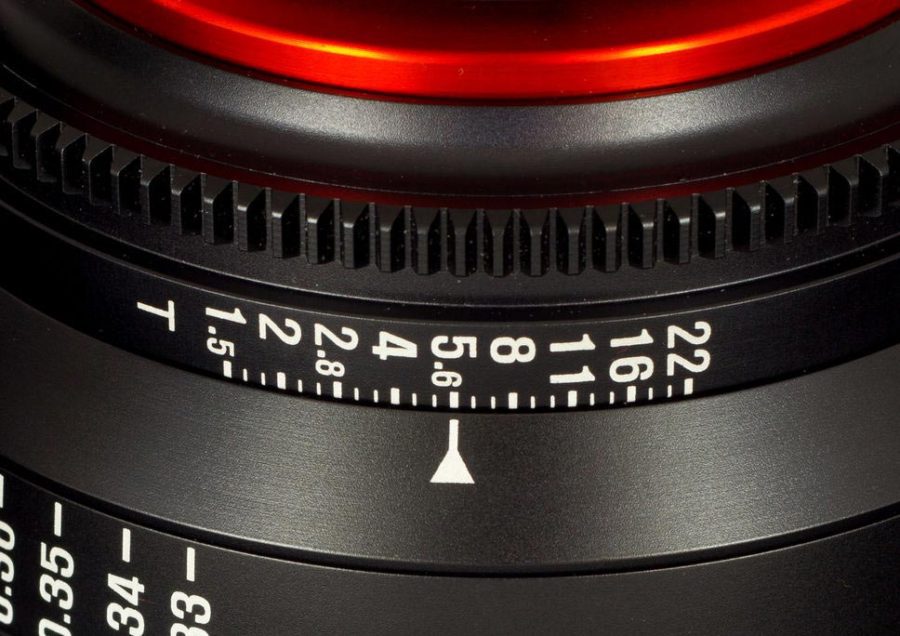
Cinema lenses use T-stops, which are a direct and precise measure of the amount of light left after it has traveled through the lens.
Measuring the amount of light instead of calculating it based on a mathematical formula is important because all optical elements in the lens will stop some light from traveling all the way through, leading to differences from lens to lens.
T-stop brings consistency across different lenses, e.g., in a lens kit of different focal lengths. So when the camera operator switches from 35mm to 85mm, he knows he will get the same exposure each time.
If there were constantly small chances of exposure in a scene shot from multiple camera angles, post-production would take a lot of time (aka money) to constantly fix these minor imperfections.
Cine lens rings offer more control over the aperture.
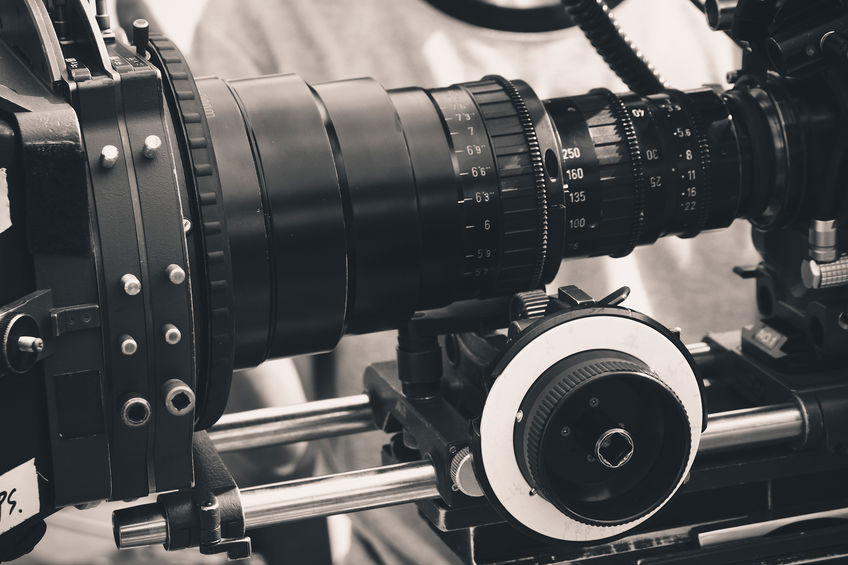
Cine lenses also have a separate ring for the iris, providing smooth control over the aperture, meaning you can seamlessly transition from one T-stop to the next.
The aperture rings are also larger on cinema lenses than on photography lenses, giving you more precise control of the aperture. Many modern photography lenses don’t even have an aperture ring, as it’s set in the camera.
Adjusting the T-stop is also silent, unlike the noticeable click when changing f-stops on a manual lens.
Many owners of vintage photography lenses who use them for video choose to modify the lenses and “de-click” the aperture ring for this same reason.
This allows you to mount focus gear so you (or your focus puller) can precisely pull focus.
Focus Throw on cine vs. photography lenses
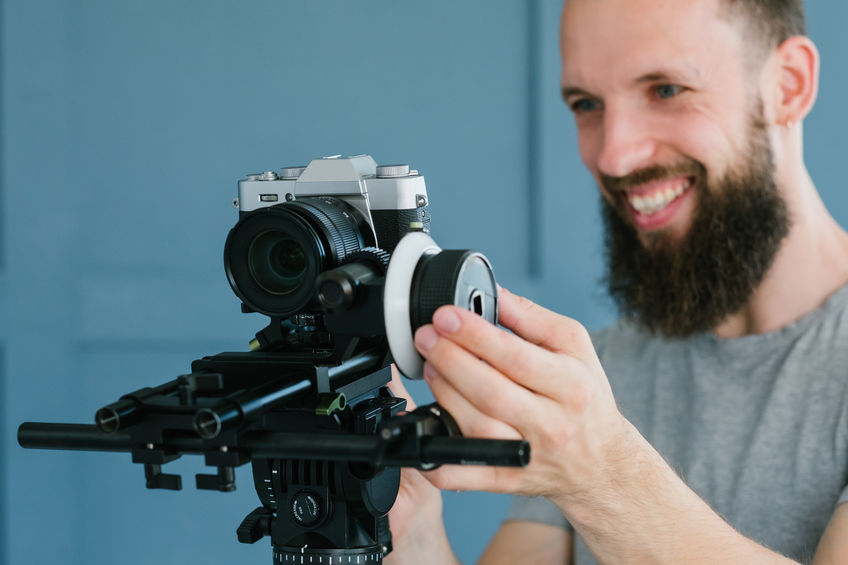
Cinema lenses are manually focused using a large, smooth focus ring.
Photography lenses are also available with manual focus, but the focus ring is small due to the need for speed when focusing. The smaller focus ring means a photography lens has a shorter focus throw than a cinema lens.
Focus throw is the distance the focus ring travels when adjusting the focal point between the minimum focal point and infinity. With a shorter focus throw distance, photography lenses allow you to focus quickly but with less precision.
Autofocus is not common on cine lenses.
Because of the need for speed when focusing, most modern photography cameras now have advanced autofocus (AF) systems. AF systems are designed to focus on a subject and even track moving subjects quickly.
Note that there is a difference between autofocus and continuous autofocus.
Autofocus for photography is mostly designed to track a subject for a single shot; you focus and then take the picture.
Continuous autofocus is designed to track a moving subject and keep the subject in focus while moving (or you are moving the camera).
The continuous autofocus system depends highly on the camera used, with Sony, Panasonic, and Canon focus systems being the best. You can read more about autofocus systems in Guide: Best Autofocus Technology For Video Cameras.
The two systems are getting closer, with eye-tracking being desired in photography and video.
Autofocus on cine lenses
If you want to autofocus on a cine lens, you need either a motorized focus wheel mounted on rods that can communicate with the continuous autofocus system of the camera.
Or you need one of the few cine zooms with a motorized servo system built into the lens, such as the Canon Cine Zoom 18-80mm T4.4.
Speaking of cine zooms…
Parfocal: Cinema zoom lenses are often parfocal, while photography lenses are not.
Most photography zoom lenses are varifocal, meaning the focus is variable. It changes as the focal length and magnification of the lens change, requiring you or the AF system to refocus.
Cinema lenses are parfocal, meaning they hold their focus when zooming in and out. Without the parfocal design, it would be difficult for camera operators to maintain focus when adjusting the focal length.
Focus Breathing: Good Cinema lenses have minimal lens breathing.
Focus breathing (aka lens breathing) is when the angle of view of a lens changes as the focus is adjusted from near to far subjects, causing a noticeable shift in the framing or magnification of the image.
The Sigma 50-100mm f/1.8 lens is known for its horrible focus breathing. You can see how bad it is in this video from Tony Dae. Notice that this lens is available as both a photography lens and a cine lens—but the focus breathing is equally bad for both. I still love it, though—it’s an amazing lens!
This is rarely a problem for photography lenses, as you won’t notice the lens breathing on a single image. But it is noticeable when recording video, which is why good cine lenses have minimal focus breathing.
Minimizing focus breathing is one reason for the increased cost of cinema lenses. Manufacturers need to pay more attention to lens design to minimize the impact of internal movements.
Do cinema lenses provide sharper images?

High-end cinema lenses may provide sharper focus as they typically have a higher-quality glass. The clarity of the glass used for the lens and internal components significantly impacts the quality of the image or video taken with the camera.
However, high-end photography lenses can also produce very sharp images.
Also, remember that an image that is too sharp isn’t always desirable in cinema, where a more “organic” look is often preferred. Most high-end cinema lenses today are extremely sharp and are modified in various ways (fx using filters) for each production to give the lenses a particular look.
Above a certain threshold, sharpness becomes less important. Instead, a lens’s color rendition and three-dimensionality become the differentiating factor.
Final Thoughts: Are Cine Lenses Worth it? And When?

Cinema lenses are generally more expensive than comparable photo lenses, and as a videographer, you may wonder whether the cost is worth it. After all, you can use “normal” lenses for full-frame or mirrorless DSLR cameras.
The answer depends on your needs and the type of video you plan to film.
Cine lenses offer many advantages over standard photography lenses, including durable designs and more control over depth of field and lighting. But they’re also heavier and more expensive.
However, cinema lenses are also manual focus, meaning you need to adjust focus each time manually. Most cinema lenses do not work with built-in autofocus features.
Even though you can dial in focus with your hand directly on the lens, most prefer a focus wheel. This means you also need to add rods and a base or a cage to your camera, which increases the cost and weight of your camera rig.
You might even have to hire a focus puller and have a separate screen wirelessly connected to your camera for this person, which adds to the production cost.
The smooth control of the large manual focus ring makes cinema lenses delightful to work with–especially under controlled conditions like a narrative film or a music video.
But a cinema lens might not be the best choice if you’re shooting mostly run-and-gun interviews or documentaries. You should consider using a video camera with great autofocus and a photography lens that supports this instead.
A photo lens such as the Canon 24-105mm IS Lens is a true workhorse that many documentary filmmakers love.
Also, a cinema lens is unnecessary if you mostly record stationary subjects, such as vlogging. For example, a video diary or makeup tutorial typically involves a fixed camera and a seated subject. You do not need to adjust the depth of field, aperture setting, zoom, or focus while filming.
Cinema lenses are not for everyone. They offer many advantages for videography but come with a much higher price tag than the typical photography lens.
However, you may want to upgrade to a cine lens if you want full focus control, T-stops, or the best parfocal zoom lenses.
Up Next: The Most Common Lenses And Focal Lengths Used in Hollywood Movies

